Komatsu HD785 Operator Manual
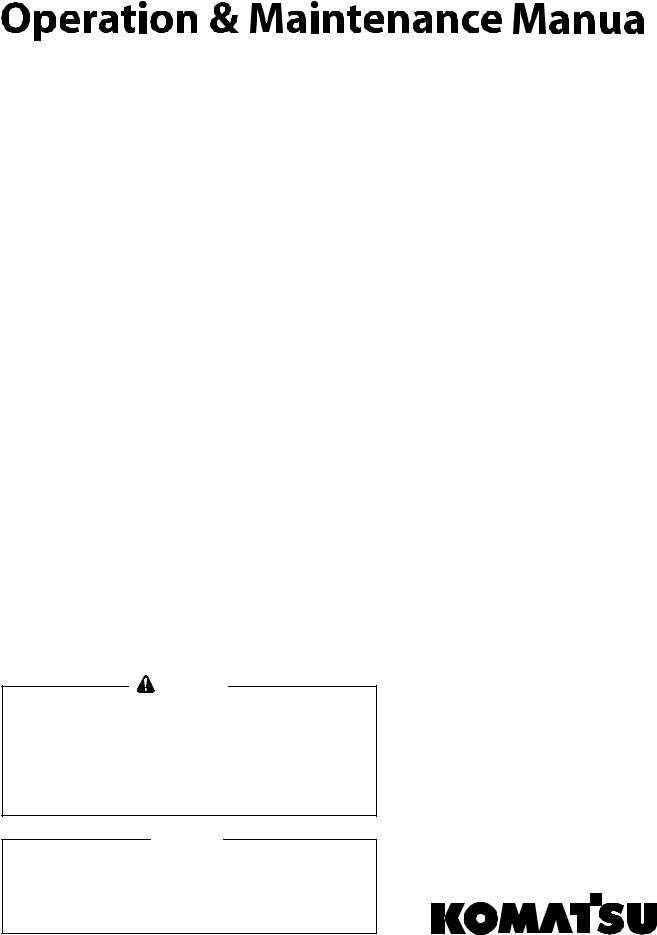
https://www.truck-manuals.net/
PEN00042-03
|
|
|
|
|
|
|
|
|
|
|
|
|
|
|
|
|
|
|
|
|
|
|
|
|
|
|
|
|
|
|
|
DUMP TRUCK HD785 |
-5 |
|
|
SERIAL NUMBERS |
4254 and up |
||
|
|
|
|
WARNING
Unsafe Use of this machine may cause serious injury or Death.Operators and maintenance personnel must read this manual before operating or maintaining this machine. This manual should be kept near the machine for reference and periodically reviewed by all personnel
who will come into contact with it .
NOTICE
Komatsu has Operation & Maintenance Manuals written in some other languages. if a foreign language manual is necessary, contact your local distributor for availability.
https://www.truck-manuals.net/
1 - 1
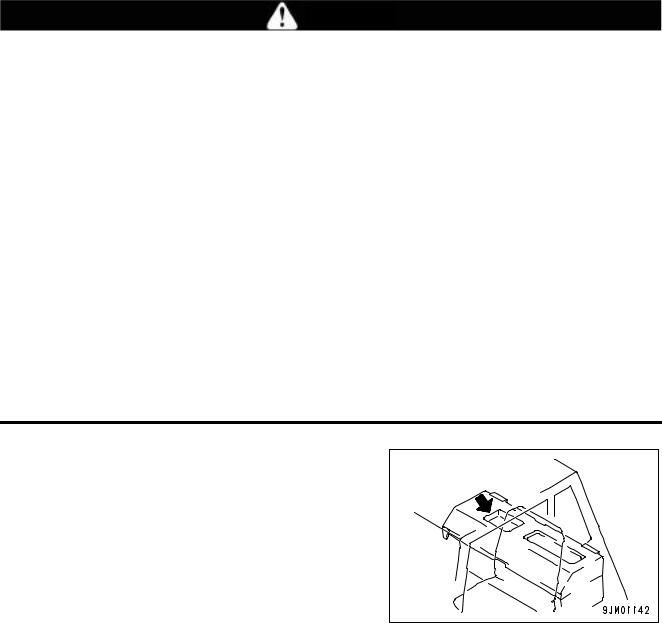
|
https://www.truck-manuals.net/ |
FOREWORD |
FOREWORD |
|
|
FOREWORD
This manual provides rules and guidelines which will help you use this machine safely and effectively. The precautions in this manual must be followed at all times when performing operation and maintenance. Most accidents are caused by the failure to follow fundamental safety rules for the operation and maintenance of machines. Accidents can be prevented by knowing beforehand conditions that may cause a hazard when performing operation and maintenance.
WARNING
Operators and maintenance personnel must always do as follows before beginning operation or maintenance.


 Always be sure to read and understand this manual thoroughly before performing operation and maintenance.
Always be sure to read and understand this manual thoroughly before performing operation and maintenance.


 Read the safety messages given in this manual and the safety labels affixed to the machine thoroughly and be sure that you understand them fully.
Read the safety messages given in this manual and the safety labels affixed to the machine thoroughly and be sure that you understand them fully.
Keep this manual in the storage location for the operation and maintenance manual given below, and have all personnel read it periodically.
If this manual has been lost or has become dirty and cannot be read, request a replacement manual immediately from Komatsu or your Komatsu distributor.
If you sell the machine, be sure to give this manual to the new owners together with the machine.
Komatsu delivers machines that comply with all applicable regulations and standards of the country to which it has been shipped. If this machine has been purchased in another country or purchased from someone in another country, it may lack certain safety devices and specifications that are necessary for use in your country. If there is any question about whether your product complies with the applicable standards and regulations of your country, consult Komatsu or your Komatsu distributor before operating the machine.
Place to Keep the Manual
It is located behind the operator's seat.
1 - 2

FOREWORD |
https://www.truck-manuals.net/ |
FOREWORD |
1 - 3
|
https://www.truck-manuals.net/ |
FOREWORD |
FOREWORD |
|
|
1 - 4
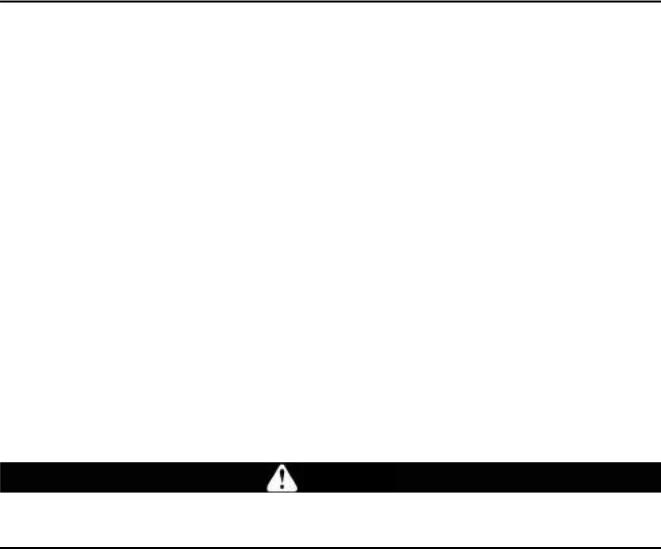
FOREWORD |
https://www.truck-manuals.net/ |
SAFETY INFORMATION |
SAFETY INFORMATION
To enable you to use this machine safely, safety precautions and labels are given in this manual and affixed to the machine to give explanations of situations involving potential hazards and of the methods of avoiding such situations.
Signal words
The following signal words are used to inform you that there is a potential hazardous situation that may lead to personal injury or damage.
In this manual and on machine labels, the following signal words are used to express the potential level of hazard.
Indicates an imminently hazardous situation which, if not avoided, will result in death or serious injury.
Indicates a potentially hazardous situation which, if not avoided, could result in death or serious injury.
Indicates a potentially hazardous situation which, if not avoided, may result in minor or moderate injury. This word is used also to alert against unsafe practices that may cause property damage.
Example of safety message using signal word
WARNING
When standing up from the operator's seat, always place the safety lock lever in the LOCK position.
If you accidentally touch the control levers when they are not locked, this may cause a serious injury or death.
Other signal words
In addition to the above, the following signal words are used to indicate precautions that should be followed to protect the machine or to give information that is useful to know.
This word is used for precautions that must be taken to avoid actions which could shorten the life of the machine.
This word is used for information that is useful to know.
1 - 5

|
https://www.truck-manuals.net/ |
SAFETY INFORMATION |
FOREWORD |
|
|

 Safety labels
Safety labels
Safety labels are affixed to the machine to inform the operator or maintenance worker on the spot when carrying out operation or maintenance of the machine that may involve hazard.
This machine uses "Safety labels using words" and "Safety labels using pictograms" to indicate safety procedures.
Example of safety label using words
Safety labels using pictogram
Safety pictograms use a picture to express a level of hazardous condition equivalent to the signal word. These safety pictograms use pictures in order to let the operator or maintenance worker understand the level and type of hazardous condition at all times. Safety pictograms show the type of hazardous condition at the top or left side, and the method of avoiding the hazardous condition at the bottom or right side. In addition, the type of hazardous condition is displayed inside a triangle and the method of avoiding the hazardous condition is shown inside a circle.
Komatsu cannot predict every circumstance that might involve a potential hazard in operation and maintenance. Therefore, the safety messages in this manual and on the machine may not include all possible safety precautions. If any procedures or actions not specifically recommended or allowed in this manual are used, it is your responsibility to take the necessary steps to ensure safety.
In no event should you engage in prohibited uses or actions described in this manual.
The explanations, values, and illustrations in this manual were prepared based on the latest information available at that time. Continuing improvements in the design of this machine can lead to changes in detail which may not be reflected in this manual. Consult Komatsu or your Komatsu distributor for the latest available information of your machine or for questions regarding information in this manual.
The numbers in circles in the illustrations correspond to the numbers in ( ) in the text. (For example: 1 -> (1))
1 - 6
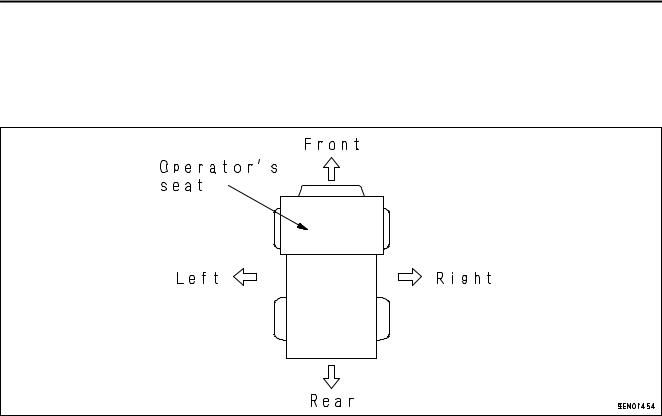
https://www.truck-manuals.net/
FOREWORD
INTENDED USE
DIRECTIONS OF MACHINE
INTENDED USE
In this manual, the directions of the machine (front, rear, left, right) are determined according to the view from the operator's seat in the direction of travel (front) of the machine.
1 - 7
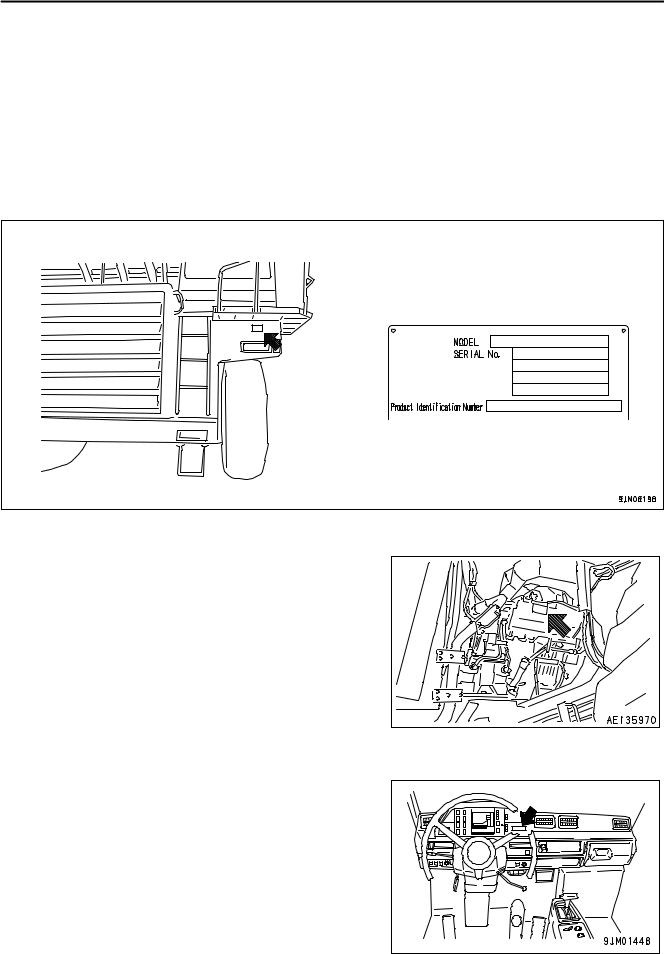
https://www.truck-manuals.net/
LOCATION OF PLATES, TABLE TO ENTER SERIAL NO. AND DISTRIBUTOR FOREWORD
LOCATION OF PLATES, TABLE TO ENTER SERIAL NO. AND DISTRIBUTOR
When requesting service or ordering replacement parts, please inform your Komatsu distributor of the following items.
PRODUCT IDENTIFICATION NUMBER (PIN)/MACHINE SERIAL NO. PLATE
It is located on the left front end of the frame.
The design of the nameplate differs according to the territory.
ENGINE SERIAL NO. PLATE POSITION
The engine serial number plate is on the upper right side of (viewed from the fan) the cylinder block (on the intake manifold cover).
SERVICE METER POSITION
It is located on the right side of the meter section.
1 - 8
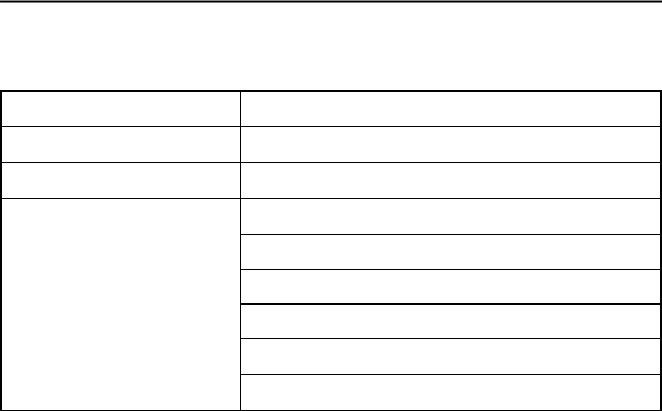
FOREWORD |
https://www.truck-manuals.net/ |
LOCATION OF PLATES, TABLE TO ENTER SERIAL NO. AND DISTRIBUTOR |
TABLE TO ENTER SERIAL NO. AND DISTRIBUTOR
Machine serial No.
Engine serial No.
Product identification number (PIN)
Distributor name
Address
Service Personnel
Phone/Fax
1 - 9

https://www.truck-manuals.net/
CONTENTS FOREWORD
CONTENTS
FOREWORD |
1- |
1 |
FOREWORD |
1- |
2 |
SAFETY INFORMATION |
1- |
5 |
INTENDED USE |
1- |
7 |
DIRECTIONS OF MACHINE |
1- |
7 |
LOCATION OF PLATES, TABLE TO ENTER SERIAL NO. AND DISTRIBUTOR |
1- |
8 |
PRODUCT IDENTIFICATION NUMBER (PIN)/MACHINE SERIAL NO. PLATE |
1- |
8 |
ENGINE SERIAL NO. PLATE POSITION |
1- |
8 |
SERVICE METER POSITION |
1- |
8 |
TABLE TO ENTER SERIAL NO. AND DISTRIBUTOR |
1- |
9 |
SAFETY |
2- |
1 |
SAFETY INFORMATION |
2- |
2 |
SAFETY LABELS |
2- |
4 |
POSITION FOR ATTACHING SAFETY LABELS |
2- |
5 |
SAFETY LABELS |
2- |
6 |
GENERAL PRECAUTIONS |
2- 10 |
|
PRECAUTIONS DURING OPERATION |
2- 18 |
|
BEFORE STARTING ENGINE |
2- 18 |
|
AFTER STARTING ENGINE |
2- 20 |
|
BATTERY |
2- 23 |
|
TOWING |
2- 25 |
|
PRECAUTIONS FOR MAINTENANCE |
2- 26 |
|
PRECAUTIONS WITH TIRES |
2- 32 |
|
OPERATION |
3- |
1 |
GENERAL VIEW |
3- |
2 |
GENERAL VIEW OF MACHINE |
3- |
2 |
GENERAL VIEW OF CONTROLS AND GAUGES |
3- |
3 |
EXPLANATION OF COMPONENTS |
3- |
5 |
MACHINE MONITOR |
3- |
5 |
SWITCHES |
3- 22 |
|
CONTROL LEVERS AND PEDALS |
3- 30 |
|
MECHATRONICS EQUIPMENT CONTROLLER |
3- 34 |
|
SAFETY PIN |
3- 35 |
|
DUST INDICATOR |
3- 35 |
|
FUSES |
3- 36 |
|
CAR STEREO |
3- 38 |
|
AIR CONDITIONER |
3- 47 |
|
CAR HEATER |
3- 52 |
|
LOCATION OF FIRE EXTINGUISHER |
3- 53 |
|
LOCATION OF FIRST AID KIT |
3- 53 |
|
OPERATION |
3- 54 |
|
CHECK BEFORE STARTING ENGINE |
3- 54 |
|
STARTING ENGINE |
3- 70 |
|
OPERATIONS, CHECKS AFTER STARTING ENGINE |
3- 73 |
|
STOPPING ENGINE |
3- 74 |
|
CHECKS AFTER STOPPING ENGINE |
3- 74 |
|
MOVING MACHINE OFF (FORWARD, REVERSE), STOPPING |
3- 75 |
|
SHIFTING GEAR |
3- 80 |
|
TRAVELING DOWNHILL |
3- 81 |
|
1 - 10

FOREWORD |
https://www.truck-manuals.net/ |
CONTENTS |
STEERING THE MACHINE |
3- 87 |
|
LOADING OPERATIONS |
3- 87 |
|
DUMP OPERATIONS |
3- 88 |
|
PRECAUTIONS FOR OPERATION |
3- 89 |
|
PARKING MACHINE |
3- 90 |
|
CHECKS AFTER COMPLETION OF WORK |
3- 91 |
|
DRAIN WATER FROM AIR TANK |
3- 91 |
|
LOCKING |
3- 92 |
|
HANDLING TIRES |
3- 93 |
|
DETERMINING AND MAINTAINING TRAVEL ROAD |
3- 95 |
|
DETERMINING TRAVEL ROAD |
3- 95 |
|
MAINTAINING TRAVEL ROAD |
3- 95 |
|
TRANSPORTATION |
3- 96 |
|
PRECAUTIONS WHEN TRANSPORTING |
3- 96 |
|
STEPS FOR TRANSPORTATION |
3- 96 |
|
METHOD OF SECURING MACHINE |
3- 97 |
|
METHOD OF LIFTING MACHINE |
3- 98 |
|
COLD WEATHER OPERATION |
3-100 |
|
PRECAUTIONS FOR LOW TEMPERATURE |
3-100 |
|
PRECAUTIONS AFTER COMPLETION OF WORK |
3-101 |
|
AFTER COLD WEATHER |
3-102 |
|
LONG-TERM STORAGE |
3-103 |
|
BEFORE STORAGE |
3-103 |
|
DURING STORAGE |
3-103 |
|
AFTER STORAGE |
3-103 |
|
PRECAUTIONS BEFORE TRAVELING AFTER LONG-TERM STORAGE |
3-103 |
|
TROUBLESHOOTING |
3-104 |
|
AFTER RUNNING OUT OF FUEL |
3-104 |
|
METHOD OF TOWING MACHINE |
3-104 |
|
IF BATTERY IS DISCHARGED |
3-109 |
|
OTHER TROUBLE |
3-113 |
|
MAINTENANCE |
4- |
1 |
GUIDES TO MAINTENANCE |
4- |
2 |
OUTLINE OF SERVICE |
4- |
4 |
HANDLING OIL, FUEL, COOLANT, AND PERFORMING OIL CLINIC |
4- |
4 |
OUTLINE OF ELECTRIC SYSTEM |
4- |
7 |
WEAR PARTS |
4- |
8 |
WEAR PARTS LIST |
4- |
8 |
RECOMMENDED FUEL, COOLANT, AND LUBRICANT |
4- |
9 |
USE OF FUEL, COOLANT AND LUBRICANTS ACCORDING TO AMBIENT TEMPERATURE |
4- 10 |
|
RECOMMENDED BRANDS, RECOMMENDED QUALITY FOR PRODUCTS OTHER THAN |
|
|
KOMATSU GENUINE OIL |
4- 11 |
|
STANDARD TIGHTENING TORQUES FOR BOLTS AND NUTS |
4- 12 |
|
TORQUE LIST |
4- 12 |
|
PERIODIC REPLACEMENT OF SAFETY CRITICAL PARTS |
4- 13 |
|
SAFETY CRITICAL PARTS |
4- 14 |
|
MAINTENANCE SCHEDULE CHART |
4- 15 |
|
MAINTENANCE SCHEDULE CHART |
4- 15 |
|
SERVICE PROCEDURE |
4- 18 |
|
INITIAL 250 HOURS SERVICE (ONLY AFTER THE FIRST 250 HOURS) |
4- 18 |
|
1 - 11

|
https://www.truck-manuals.net/ |
CONTENTS |
FOREWORD |
|
|
WHEN REQUIRED |
4- 19 |
|
CHECK BEFORE STARTING |
4- 36 |
|
EVERY 100 HOURS SERVICE |
4- 37 |
|
EVERY 250 HOURS SERVICE |
4- 38 |
|
EVERY 500 HOURS SERVICE |
4- 53 |
|
EVERY 1000 HOURS SERVICE |
4- 58 |
|
EVERY 2000 HOURS SERVICE |
4- 63 |
|
EVERY 4000 HOURS SERVICE |
4- 69 |
|
EVERY 15000 HOURS SERVICE |
4- 71 |
|
SPECIFICATIONS |
5- |
1 |
SPECIFICATIONS |
5- |
2 |
ATTACHMENTS, OPTIONS |
6- |
1 |
HANDLING PAYLOAD METER |
6- |
2 |
NAME OF PARTS |
6- |
2 |
EXTERNAL DISPLAY LAMPS |
6- |
3 |
OPERATING PAYLOAD METER |
6- |
5 |
TACHOGRAPH (TCO 15-6) |
6- 13 |
|
EXPLANATION OF COMPONENTS |
6- 13 |
|
METHOD OF USING KEY |
6- 15 |
|
METHOD OF USE |
6- 15 |
|
REVO TACHOGRAPH (TCO 15-7) |
6- 17 |
|
EXPLANATION OF COMPONENTS |
6- 17 |
|
METHOD OF USE |
6- 19 |
|
USING DIFFERENTIAL LOCK |
6- 21 |
|
DIFFERENTIAL LOCK PEDAL |
6- 21 |
|
PRECAUTIONS AND METHOD OF USE |
6- 22 |
|
OPERATION OF ABS AND ABS/ASR |
6- 23 |
|
EXPLANATION OF COMPONENTS |
6- 23 |
|
OPERATION METHOD |
6- 25 |
|
PRECAUTIONS FOR USE |
6- 26 |
|
TROUBLESHOOTING |
6- 26 |
|
ARSC (AUTOMATIC RETARDER SPEED CONTROL) |
6- 27 |
|
EXPLANATION OF COMPONENTS |
6- 28 |
|
METHOD OF OPERATION |
6- 30 |
|
TROUBLESHOOTING |
6- 32 |
|
PMC (POWERTRAIN MANAGEMENT CONTROLLER) AND MOM (MESSAGE FOR |
|
|
OPERATION AND MAINTENANCE) |
6- 35 |
|
CHECK BEFORE STARTING |
6- 35 |
|
ABNORMALITY DISPLAYED DURING OPERATION |
6- 35 |
|
HOW TO DOWNLOAD THE STORED DATA IN PMC AND OTHER CONTROLLERS |
6- 35 |
|
MESSAGE FOR OPERATION AND MAINTENANCE (MOM) |
6- 36 |
|
ASR-II (AUTOMATIC SPIN REGULATOR II) |
6- 41 |
|
EXPLANATION OF COMPONENTS |
6- 41 |
|
ACTUATION OF ASR-II SYSTEM |
6- 42 |
|
PRECAUTIONS WHEN USING |
6- 42 |
|
TROUBLESHOOTING |
6- 43 |
|
HANDLING AUTO-GREASING SYSTEM |
6- 45 |
|
OUTLINE OF AUTO-GREASING SYSTEM |
6- 45 |
|
SETTING GREASE CAN |
6- 46 |
|
INITIAL SETTING OF AUTO-GREASING SYSTEM |
6- 47 |
|
1 - 12
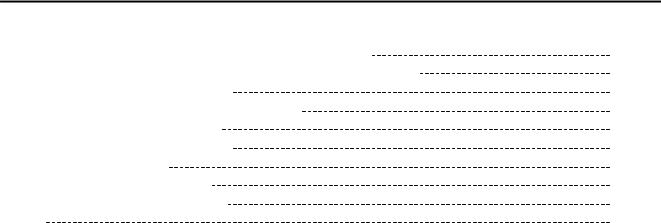
FOREWORD |
https://www.truck-manuals.net/ |
CONTENTS |
METHOD OF OPERATING AUTO-GREASING SYSTEM |
6- 47 |
|
PRECAUTIONS WHEN HANDLING AUTO-GREASING SYSTEM |
6- 48 |
|
POSITION OF EACH INJECTOR |
6- 52 |
|
GREASING POINTS FOR EACH INJECTOR |
6- 56 |
|
HIGH ALTITUDE SPECIFICATIONS |
7- |
1 |
EXPLANATION OF COMPONENTS |
7- |
2 |
SERVICE PROCEDURE |
7- |
3 |
CHECK BEFORE STARTING |
7- |
3 |
EVERY 2000 HOURS SERVICE |
7- |
4 |
INDEX |
8- |
1 |
1 - 13
https://www.truck-manuals.net/
2 - 1

https://www.truck-manuals.net/
SAFETY INFORMATION SAFETY
SAFETY INFORMATION
SAFETY LABELS |
2- |
4 |
POSITION FOR ATTACHING SAFETY LABELS |
2- |
5 |
SAFETY LABELS |
2- |
6 |
GENERAL PRECAUTIONS |
2- 10 |
|
SAFETY RULES |
2- 10 |
|
IF ABNORMALITIES ARE FOUND |
2- 10 |
|
CLOTHING AND PERSONAL PROTECTIVE ITEMS |
2- 10 |
|
FIRE EXTINGUISHER AND FIRST AID KIT |
2- 10 |
|
SAFETY FEATURES |
2- 10 |
|
KEEP MACHINE CLEAN |
2- 11 |
|
INSIDE OPERATOR'S COMPARTMENT |
2- 11 |
|
ALWAYS APPLY LOCK WHEN LEAVING OPERATOR'S SEAT |
2- 11 |
|
HANDRAILS AND STEPS |
2- 12 |
|
MOUNTING AND DISMOUNTIN |
2- 12 |
|
PREVENTION OF BURNS |
2- 13 |
|
FIRE PREVENTION |
2- 13 |
|
ACTION IF FIRE OCCURS |
2- 14 |
|
WINDOW WASHER LIQUID |
2- 14 |
|
PRECAUTIONS WHEN USING ROPS (Roll Over Protective Structure) |
2- 15 |
|
PRECAUTIONS FOR ATTACHMENTS |
2- 15 |
|
UNAUTHORIZED MODIFICATION |
2- 15 |
|
SAFETY AT WORKSITE |
2- 15 |
|
WORKING ON LOOSE GROUND |
2- 16 |
|
DO NOT GO CLOSE TO HIGH-VOLTAGE CABLES |
2- 16 |
|
ENSURE GOOD VISIBILITY |
2- 16 |
|
PRECAUTIONS ON INDOOR VENTILATION |
2- 17 |
|
CHECKING SIGNALMAN'S SIGNALS AND SIGNS |
2- 17 |
|
ASBESTOS DUST HAZARD PREVENTION |
2- 17 |
|
2 - 2

SAFETY |
https://www.truck-manuals.net/ |
SAFETY INFORMATION |
PRECAUTIONS DURING OPERATION |
2- 18 |
BEFORE STARTING ENGINE |
2- 18 |
CHECKS BEFORE STARTING ENGINE, ADJUST |
2- 18 |
PRECAUTIONS WHEN STARTING ENGINE |
2- 18 |
PRECAUTIONS IN COLD AREAS |
2- 19 |
AFTER STARTING ENGINE |
2- 20 |
CHECK AFTER STARTING ENGINE |
2- 20 |
PRECAUTIONS WHEN TRAVELING FORWARD OR REVERSE |
2- 20 |
PRECAUTIONS DURING OPERATION |
2- 21 |
PRECAUTIONS WHEN TRAVELING ON THE SLOPES |
2- 21 |
PRECAUTIONS WHEN OPERATING DUMP BODY |
2- 21 |
PRECAUTIONS FOR OPERATION |
2- 21 |
METHOD OF USING BRAKES |
2- 21 |
PRECAUTIONS UNDER THE SNOWING AND FREEZING CONDITION |
2- 22 |
PRECAUTIONS FOR PARKING |
2- 22 |
BATTERY |
2- 23 |
BATTERY HAZARD PREVENTION |
2- 23 |
STARTING WITH BOOSTER CABLES |
2- 24 |
TOWING |
2- 25 |
WHEN TOWING |
2- 25 |
PRECAUTIONS FOR MAINTENANCE |
2- 26 |
WARNING TAG |
2- 26 |
KEEP WORK PLACE CLEAN AND TIDY |
2- 26 |
APPOINT LEADER WHEN WORKING WITH OTHERS |
2- 26 |
STOP ENGINE BEFORE CARRYING OUT INSPECTION AND MAINTENANCE |
2- 27 |
TWO WORKERS FOR MAINTENANCE WHEN ENGINE IS RUNNING |
2- 28 |
PROPER TOOLS |
2- 28 |
HANDLING SUSPENTION CYLINDER |
2- 29 |
PERSONNEL |
2- 29 |
WORK UNDER THE MACHINE |
2- 29 |
NOISE |
2- 29 |
PRECAUTIONS WHEN USIN HAMMER |
2- 29 |
REPAIR WELDING |
2- 29 |
REMOVING BATTERY TERMINAL |
2- 30 |
PRECAUTIONS WITH HIGH-PRESSURE OIL |
2- 30 |
HANDLING HIGH-PRESSURE HOSES, PIPING |
2- 30 |
WASTE MATERIALS |
2- 30 |
MAINTENANCE OF AIR CONDITIONER |
2- 30 |
COMPRESSED AIR |
2- 31 |
PERIODIC REPLACEMENT OF SAFETY-CRITICAL PARTS |
2- 31 |
PRECAUTIONS WITH TIRES |
2- 32 |
HANDLING TIRES |
2- 32 |
PRECAUTIONS WHEN STORING TIRE |
2- 32 |
2 - 3

|
https://www.truck-manuals.net/ |
SAFETY LABELS |
SAFETY |
|
|
SAFETY LABELS
The following warning signs and safety labels are used on this machine.


 Be sure that you fully understand the correct position and content of labels.
Be sure that you fully understand the correct position and content of labels.
To ensure that the content of labels can be read properly, be sure that they are in the correct place and always keep them clean. When cleaning them, do not use organic solvents or gasoline. These may cause the labels to peel off.
There are also other labels in addition to the warning signs and safety labels. Handle those labels in the same way.
If the labels are damaged, lost, or cannot be read properly, replace them with new ones. For details of the part numbers for the labels, see this manual or the actual label, and place an order with Komatsu distributor.
2 - 4
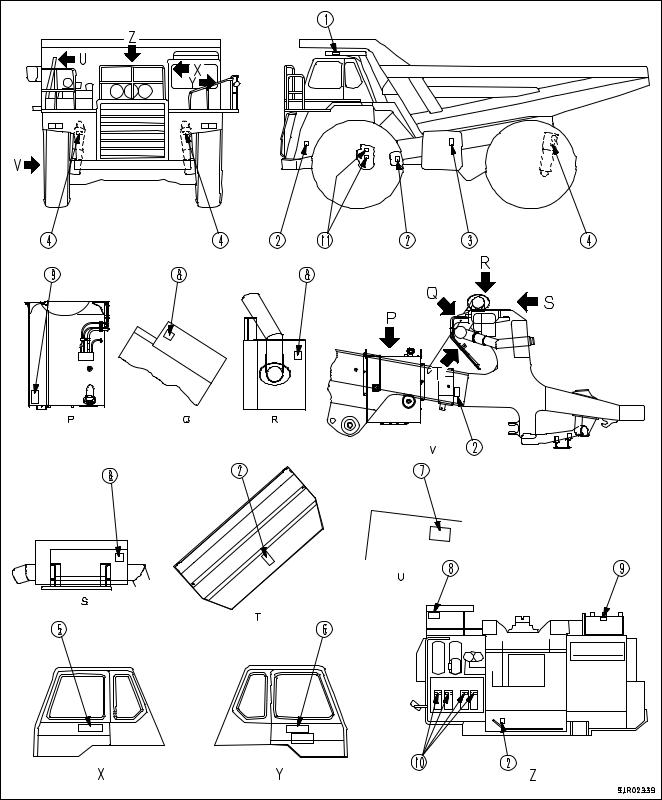
https://www.truck-manuals.net/
SAFETY |
SAFETY LABELS |
|
|
POSITION FOR ATTACHING SAFETY LABELS
2 - 5 |
|
https://www.truck-manuals.net/ |
SAFETY LABELS |
SAFETY |
|
|
SAFETY LABELS
(1) Roll-over protective structure (ROPS) (09620-30202)
(2) Caution for checking engine room (09667-A0880)
(3)Caution for opening hydraulic tank cap
Caution for opening radiator cap (09653-A0641)
2 - 6

SAFETY |
https://www.truck-manuals.net/ |
SAFETY LABELS |
(4)Warning for handling suspension cylinder (09659-A0881)
(5)Warnings for electric wire
Warnings for crush hazard when inspection and maintenance
Warnings for inspection of emergency steering system, emergency brake system Warning for leaving operator's seat, stopping engine
Warning for retarder oil temperature (569-93-61730)
2 - 7
|
https://www.truck-manuals.net/ |
SAFETY LABELS |
SAFETY |
|
|
(6)Cautions before starting
Cautions when traveling in reverse
Cautions for operating hoist control lever (dump lever) (569-93-61720)
(7) Caution when handling battery cable (09808-A1681)
(8) Exhaust pipe is hot! (09817-A1103)
2 - 8

https://www.truck-manuals.net/
SAFETY
SAFETY LABELS
(9) Caution for avoiding falling down (09805-C0881)
(10)Caution when handling battery
(This plate is stick on the machine by the battery maker.)
(11)Jump start prohibited (09842-A0481) (This plate is stick on the starting motor.)
2 - 9
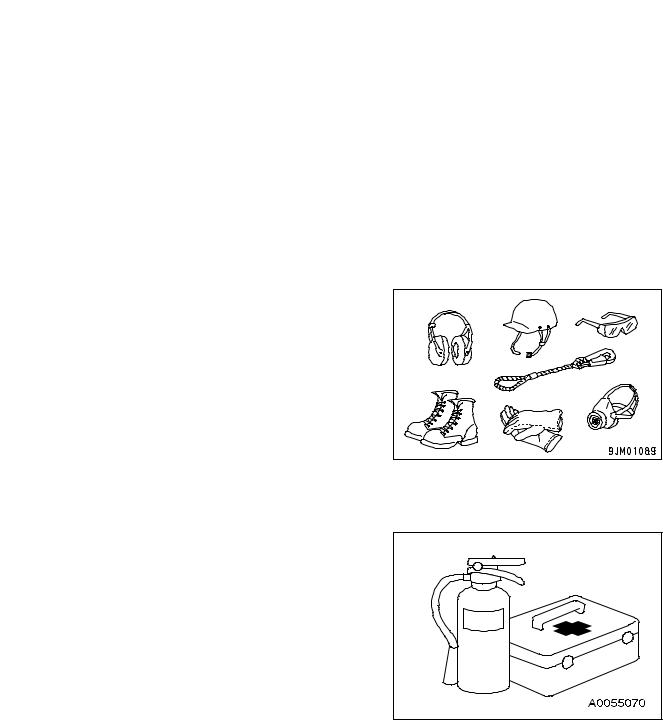
|
https://www.truck-manuals.net/ |
GENERAL PRECAUTIONS |
SAFETY |
|
|
GENERAL PRECAUTIONS
SAFETY RULES

 Only trained and authorized personnel can operate and maintain the machine.
Only trained and authorized personnel can operate and maintain the machine.

 Follow all safety rules, precautions and instructions when operating or performing maintenance on the machine.
Follow all safety rules, precautions and instructions when operating or performing maintenance on the machine.

 If you are under the influence of alcohol or medication, your ability to safely operate or repair your machine may be severly impaired putting yourself and everyone else on your jobsite in danger.
If you are under the influence of alcohol or medication, your ability to safely operate or repair your machine may be severly impaired putting yourself and everyone else on your jobsite in danger.

 When working with another operator or with a person on worksite traffic duty, be sure that all personnel understand all hand signals that are to be used.
When working with another operator or with a person on worksite traffic duty, be sure that all personnel understand all hand signals that are to be used.
IF PROBLEMS ARE FOUND
If you find any problems in the machine during operation or maintenance (noise, vibration, smell, incorrect gauges, smoke, oil leakage, etc., or any abnormal display on the warning devices or monitor), report to the person in charge and have the necessary action taken. Do not operate the machine until the problem has been corrected.
CLOTHING AND PERSONAL PROTECTIVE ITEMS

 Do not wear loose clothing and accessories. There is a hazard that they may catch on control levers or other protruding parts.
Do not wear loose clothing and accessories. There is a hazard that they may catch on control levers or other protruding parts.

 If you have long hair and it hangs out from your hard hat, there is a hazard that it may get caught up in the machine, so tie your hair up and be careful not to let it get caught.
If you have long hair and it hangs out from your hard hat, there is a hazard that it may get caught up in the machine, so tie your hair up and be careful not to let it get caught.

 Always wear a hard hat and safety shoes. If the nature of the work requires it, wear safety glasses, mask, gloves, ear plugs, and safety belt when operating or maintaining the machine.
Always wear a hard hat and safety shoes. If the nature of the work requires it, wear safety glasses, mask, gloves, ear plugs, and safety belt when operating or maintaining the machine.

 Check that all protective equipment functions properly before using it.
Check that all protective equipment functions properly before using it.
FIRE EXTINGUISHER AND FIRST AID KIT
Always follow the precautions below to prepare for action if any injury or fire should occur.
 Be sure that fire extinguishers have been provided and read the labels to ensure that you know how to use them in emergencies.
Be sure that fire extinguishers have been provided and read the labels to ensure that you know how to use them in emergencies.
 Carry out periodic inspection and maintenance to ensure that the fire extinguisher can always be used.
Carry out periodic inspection and maintenance to ensure that the fire extinguisher can always be used.
 Provide a first aid kit in the storage point. Carry out periodic checks and add to the contents if necessary.
Provide a first aid kit in the storage point. Carry out periodic checks and add to the contents if necessary.
SAFETY FEATURES
 Be sure that all guards and covers are in their proper position. Have guards and covers repaired immediately if they are damaged.
Be sure that all guards and covers are in their proper position. Have guards and covers repaired immediately if they are damaged.
 Understand the method of use of safety features and use them properly.
Understand the method of use of safety features and use them properly.
 Never remove any safety features. Always keep them in good operating condition.
Never remove any safety features. Always keep them in good operating condition.
2 - 10
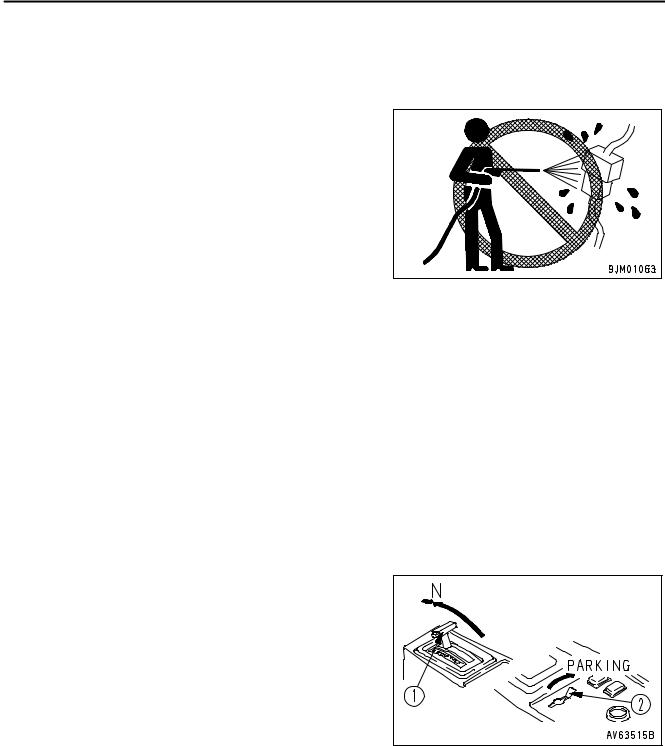
SAFETY |
https://www.truck-manuals.net/ |
GENERAL PRECAUTIONS |
KEEP MACHINE CLEAN

 If water gets into the electrical system, there is a hazard that it will cause malfunctions or misoperation. Do not use water or steam to wash the electrical system (sensors, connectors).
If water gets into the electrical system, there is a hazard that it will cause malfunctions or misoperation. Do not use water or steam to wash the electrical system (sensors, connectors).

 If inspection and maintenance is carried out when the machine
If inspection and maintenance is carried out when the machine
is still dirty with mud or oil, there is a hazard that you will slip and fall, or that dirt or mud will get into your eyes. Always keep the machine clean.
INSIDE OPERATOR'S COMPARTMENT
 When entering the operator's compartment, always remove all mud and oil from the soles of your shoes.
When entering the operator's compartment, always remove all mud and oil from the soles of your shoes.
If you operate the pedal with mud or oil affixed to your shoes, your foot may slip and this may cause a serious accident.
 Do not leave parts or tools lying around the operator's compartment.
Do not leave parts or tools lying around the operator's compartment.
 Do not stick suction pads to the window glass. Suction pads act as a lens and may cause fire.
Do not stick suction pads to the window glass. Suction pads act as a lens and may cause fire.
 Do not use cellular telephones inside the operator's compartment when driving or operating the machine.
Do not use cellular telephones inside the operator's compartment when driving or operating the machine.  Never bring any dangerous objects such as flammable or explosive items into the operator's compartment.
Never bring any dangerous objects such as flammable or explosive items into the operator's compartment.
ALWAYS APPLY LOCK WHEN LEAVING OPERATOR'S SEAT
 Before adjusting or standing up from the operator's seat, always set the gear shift lever to the N position and the parking brake valve lever to the PARKING position, then stop the engine.
Before adjusting or standing up from the operator's seat, always set the gear shift lever to the N position and the parking brake valve lever to the PARKING position, then stop the engine.
 If you touch or bump the control levers unintentionally, the machine could suddenly move, and cause an accident that might result in bodily harm.
If you touch or bump the control levers unintentionally, the machine could suddenly move, and cause an accident that might result in bodily harm.
 Place gear shift lever (1) at neutral and set parking brake valve lever (2) to the PARKING position.
Place gear shift lever (1) at neutral and set parking brake valve lever (2) to the PARKING position.
Lower the dump body, set the dump lever to the HOLD position, then apply the lock.
Stop the engine. Apply all the lock and always remember to take the key with you and keep where it should be.
2 - 11
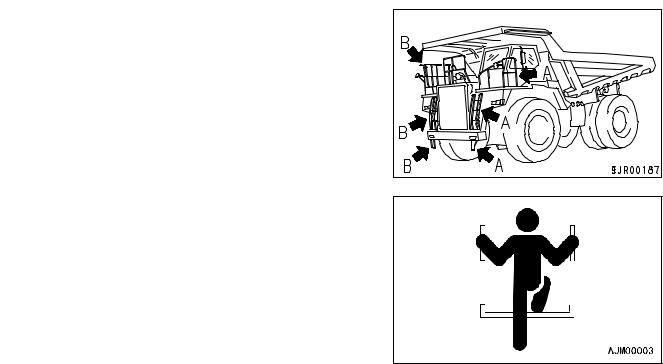
|
https://www.truck-manuals.net/ |
GENERAL PRECAUTIONS |
SAFETY |
|
|
HANDRAILS AND STEPS
To prevent personal injury caused by slipping or falling off the machine, always do as follows. 
 Use the handrails and steps marked by arrows in the diagram
Use the handrails and steps marked by arrows in the diagram
below when getting on or off the machine.
A: For use when getting on or off the operator's seat from the left door
B: For use when getting on or off the operator's seat from the engine hood or right door
 To ensure safety, always face the machine and maintain three-point contact (both feet and one hand, or both hands and one foot) with the handrails and steps to ensure that you support yourself.
To ensure safety, always face the machine and maintain three-point contact (both feet and one hand, or both hands and one foot) with the handrails and steps to ensure that you support yourself.
 Do not grip the dump lever when getting on or off the machine.
Do not grip the dump lever when getting on or off the machine.
 Never climb on the engine hood or covers where there are no non-slip pads.
Never climb on the engine hood or covers where there are no non-slip pads.
 Before getting on or off the machine, check the handrails and steps, and if there is any oil, grease, or mud on them, wipe it off immediately. In addition, repair any damage and tighten any loose bolts.
Before getting on or off the machine, check the handrails and steps, and if there is any oil, grease, or mud on them, wipe it off immediately. In addition, repair any damage and tighten any loose bolts.
 Do not get on or off the machine while holding tools in your hand.
Do not get on or off the machine while holding tools in your hand.
MOUNTING AND DISMOUNTING
 Never jump on or off the machine. Never get on or off a moving machine.
Never jump on or off the machine. Never get on or off a moving machine.
 If the machine starts to move when there is no operator on the machine, do not jump on to the machine and try to stop it.
If the machine starts to move when there is no operator on the machine, do not jump on to the machine and try to stop it.
2 - 12
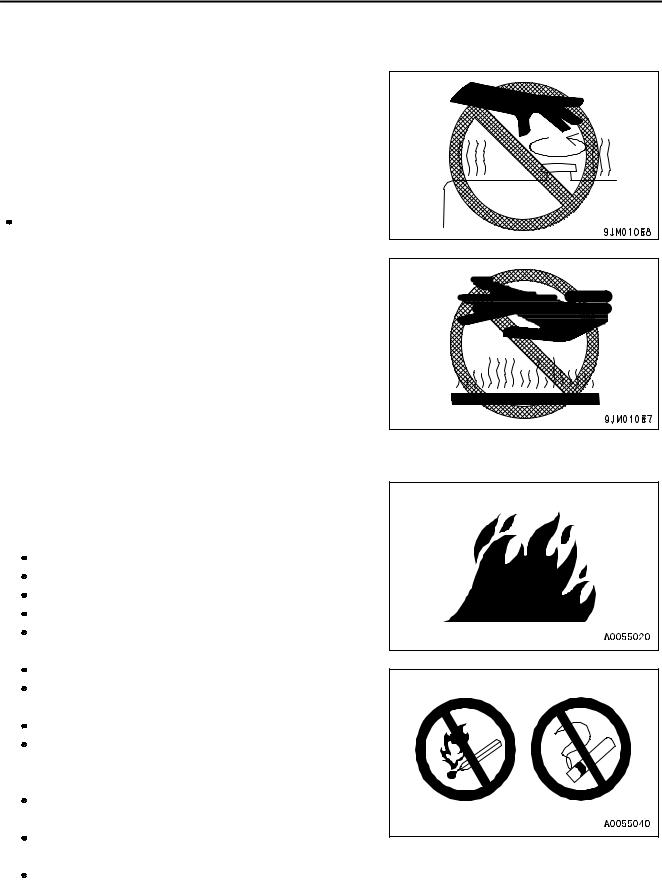
SAFETY |
https://www.truck-manuals.net/ |
GENERAL PRECAUTIONS |
PREVENTION OF BURNS Hot coolant


 To prevent burns from hot water or steam spurting out when checking or draining the coolant, wait for the water to cool to a temperature where it is possible to touch the radiator cap by hand before starting the operation. Even when the coolant has cooled down, loosen the cap slowly to relieve the pressure inside the radiator before removing the cap.
To prevent burns from hot water or steam spurting out when checking or draining the coolant, wait for the water to cool to a temperature where it is possible to touch the radiator cap by hand before starting the operation. Even when the coolant has cooled down, loosen the cap slowly to relieve the pressure inside the radiator before removing the cap.
Hot oil
To prevent burns from hot oil spurting out when checking or draining the oil, wait for the oil to cool to a temperature where it is possible to touch the cap or plug by hand before starting the operation. Even when the oil has cooled down, loosen the cap or plug slowly to relieve the internal pressure before removing the cap or plug.
FIRE PREVENTION
 Fire caused by fuel or oil
Fire caused by fuel or oil
Fuel, oil, antifreeze, and window washer liquid are particularly flammable and can be hazardous. To prevent fire, always observe the following:
Do not smoke or use any flame near fuel or oil.
Stop the engine before refueling.
Do not leave the machine while adding fuel or oil.
Tighten all fuel and oil caps securely.
Do not spill fuel on overheated surfaces or on parts of the electrical system.
Use well-ventilated areas for adding or storing oil and fuel.
Keep oil and fuel in the determined place and do not allow unauthorized persons to enter.
After adding fuel or oil, wipe up any spilled fuel or oil.
When carrying out grinding or welding work on the chassis, move any flammable materials to a safe place before starting.
When washing parts with oil, use a non-flammable oil. Diesel oil and gasoline may catch fire, so do not use them.
Put greasy rags and other flammable materials into a safe container to maintain safety at the work place.
Do not weld or use a cutting torch to cut any pipes or tubes that contain flammable liquids.
2 - 13

|
https://www.truck-manuals.net/ |
GENERAL PRECAUTIONS |
SAFETY |
|
|

 Fire caused by accumulation of flammable material.
Fire caused by accumulation of flammable material.
Remove any dry leaves, chips, pieces of paper, dust, or any other flammable materials accumulated or affixed around the engine, exhaust manifold, muffler, or battery, or inside the undercovers.

 Fire coming from electric wiring
Fire coming from electric wiring
Short circuits in the electrical system can cause fire.


 Always keep electric wiring connections clean and securely tightened.
Always keep electric wiring connections clean and securely tightened.
Check the wiring every day for looseness or damage. Tighten any loose connectors or wiring clamps. Repair or replace any damaged wiring.
 Fire coming from hydraulic line
Fire coming from hydraulic line
Check that all the hose and tube clamps, guards, and cushions are securely fixed in position.
If they are loose, they may vibrate during operation and rub against other parts. This may lead to damage to the hoses, and cause high-pressure oil to spurt out, leading to fire damage or serious injury.
 Explosion caused by lighting equipment
Explosion caused by lighting equipment
When checking fuel, oil, battery electrolyte, window washer fluid, or coolant, always use lighting with anti-explosion specifications. If such lighting equipment is not used, there is danger of explosion that may cause serious injury.
When taking the electrical power for the lighting from the machine itself, follow the instructions in this manual.
ACTION IF FIRE OCCURS
If a fire occurs, escape from the machine as follows.
Turn the start switch OFF to stop the engine.
Use the handrails and steps to get off the machine.
WINDOW WASHER LIQUID
Use an ethyl alcohol base washer liquid.
Methyl alcohol base washer liquid may irritate your eyes, so do not use it.
2 - 14
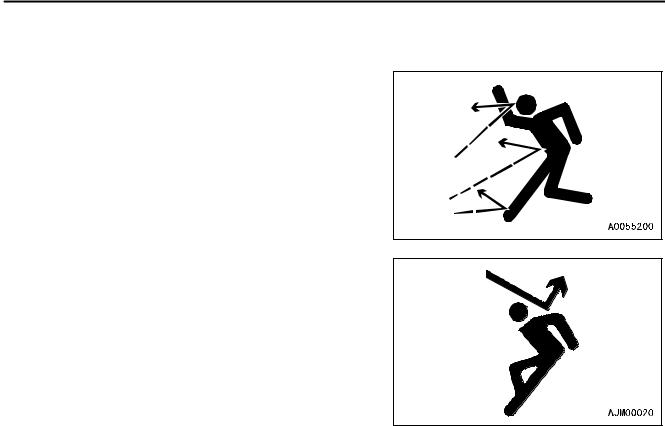
SAFETY |
https://www.truck-manuals.net/ |
GENERAL PRECAUTIONS |
PRECAUTIONS WHEN USING ROPS (Roll Over Protective Structure)
Install ROPS when working in places where there is danger of falling rocks, such as in mines and quarries, or in places where there is danger of rolling over.

 If ROPS is installed, do not remove it when operating the machine.
If ROPS is installed, do not remove it when operating the machine.

 ROPS is installed to protect the operator when machine rolls over. When machine rolls over, ROPS supports its weight and absorbs its impact energy.
ROPS is installed to protect the operator when machine rolls over. When machine rolls over, ROPS supports its weight and absorbs its impact energy.

 If ROPS is modified, its strength may be reduced. When modifying, consult your Komatsu distributor.
If ROPS is modified, its strength may be reduced. When modifying, consult your Komatsu distributor.

 If ROPS is deformed by falling objects or by rolling over, its strength lowers and its design functions cannot be maintained. In this case, be sure to ask your Komatsu distributor about repair method.
If ROPS is deformed by falling objects or by rolling over, its strength lowers and its design functions cannot be maintained. In this case, be sure to ask your Komatsu distributor about repair method.
Even when the ROPS is installed, if you do not fasten your seat belt securely, it cannot protect you properly. Always fasten your seat belt when operating the machine.
PRECAUTIONS FOR ATTACHMENTS, OPTIONS
 When installing optional parts or attachments, there may be problems with safety or legal restrictions. Therefore contact your Komatsu distributor for advice.
When installing optional parts or attachments, there may be problems with safety or legal restrictions. Therefore contact your Komatsu distributor for advice.
 Any injuries, accidents, or product failures resulting from the use of unauthorized attachments or parts will not be the responsibility of Komatsu.
Any injuries, accidents, or product failures resulting from the use of unauthorized attachments or parts will not be the responsibility of Komatsu.
 When installing and using optional attachments, read the instruction manual for the attachment, and the general information related to attachments in this manual.
When installing and using optional attachments, read the instruction manual for the attachment, and the general information related to attachments in this manual.
UNAUTHORIZED MODIFICATION
Any modification made without authorization from Komatsu can create hazards. Before making a modification, consult your Komatsu distributor.
 Komatsu will not be responsible for any injuries, accidents, product failures or other property damages resulting from modifications made without authorization from Komatsu.
Komatsu will not be responsible for any injuries, accidents, product failures or other property damages resulting from modifications made without authorization from Komatsu.
SAFETY AT WORKSITE
Before starting operations, thoroughly check the area for any unusual conditions that could be dangerous.
 Check the terrain and condition of the ground at the worksite, and determine the safest method of operation. Do not operate where there is a hazard of landslides or falling rocks.
Check the terrain and condition of the ground at the worksite, and determine the safest method of operation. Do not operate where there is a hazard of landslides or falling rocks.
 Take necessary measures to prevent any unauthorized person from entering the operating area.
Take necessary measures to prevent any unauthorized person from entering the operating area.
 When traveling or operating in shallow water or on soft ground, check the shape and condition of the bedrock, and the depth and speed of flow of the water before starting operations.
When traveling or operating in shallow water or on soft ground, check the shape and condition of the bedrock, and the depth and speed of flow of the water before starting operations.
 Always design and maintain the roads on the jobsite so that the machines can travel safely.
Always design and maintain the roads on the jobsite so that the machines can travel safely.
2 - 15

|
https://www.truck-manuals.net/ |
GENERAL PRECAUTIONS |
SAFETY |
|
|
WORKING ON LOOSE GROUND

 Avoid traveling or operating your machine too close to the edge of cliffs, overhangs, and deep ditches. The ground may be weak in such areas. If the ground should collapse under the weight or vibration of the machine, there is a hazard that the machine may fall or tip over. Remember that the soil after heavy rain or blasting or after earthquakes is weak in these areas.
Avoid traveling or operating your machine too close to the edge of cliffs, overhangs, and deep ditches. The ground may be weak in such areas. If the ground should collapse under the weight or vibration of the machine, there is a hazard that the machine may fall or tip over. Remember that the soil after heavy rain or blasting or after earthquakes is weak in these areas.

 When working on embankments or near excavated ditches, there is a hazard that the weight and vibration of the machine will cause the soil to collapse. Before starting operations, take steps to ensure that the ground is safe and to prevent the machine from rolling over or falling.
When working on embankments or near excavated ditches, there is a hazard that the weight and vibration of the machine will cause the soil to collapse. Before starting operations, take steps to ensure that the ground is safe and to prevent the machine from rolling over or falling.
DO NOT GO CLOSE TO HIGH-VOLTAGE CABLES
Do not travel or operate the machine near electric cables. There is a hazard of electric shock, which may cause serious injury or property damage. On jobsites where the machine may go close to electric cables, always do as follows.

 Before starting work near electric cables, inform the local power company of the work to be performed, and ask them to take the necessary action.
Before starting work near electric cables, inform the local power company of the work to be performed, and ask them to take the necessary action.
Even going close to high-voltage cables can cause electric
shock, which may cause serious burns or even death. Always |
Voltage of Cables |
Safety Distance |
||
100 V - 200 V |
Over 2 m (7 ft) |
|||
maintain a safe distance (see the table on the right) between the |
||||
|
|
|
||
machine and the electric cable. Check with the local power |
6,600 |
V |
Over 2 m (7 ft) |
|
company about safe operating procedure before starting |
22,000 |
V |
Over 3 m (10 ft) |
|
operations. |
|
|
|
|
66,000 |
V |
Over 4 m (14 ft) |
||
To prepare for any possible emergencies, wear rubber shoes |
|
|
|
|
154,000 |
V |
Over 5 m (17 ft) |
||
and gloves. Lay a rubber sheet on top of the seat, and be careful |
||||
187,000 |
V |
Over 6 m (20 ft) |
||
not to touch the chassis with any exposed part of your body. |
||||
|
|
|
||
275,000 |
V |
Over 7 m (23 ft) |
||
Use a signalman to give warning if the machine approaches too |
||||
|
|
|
||
500,000 |
V |
Over 11 m (36 ft) |
||
close to the electric cables. |
||||
When carrying out operations near high voltage cables, do not let anyone near the machine.
If the machine should come too close or touch the electric cable, to prevent electric shock, the operator should not leave the operator's compartment until it has been confirmed that the electricity has been shut off.
Also, do not let anyone near the machine.
ENSURE GOOD VISIBILITY
Check for any persons or obstacles in the area around the machine and check the conditions of the jobsite to ensure that operations and travel can be carried out safely. Always do as follows.
When working in dark places, turn on the working lamp and front lamps installed to the machine, and set up additional lighting in the work area if necessary.
Stop operations if the visibility is poor, such as in mist, snow, rain, or dust.
2 - 16
